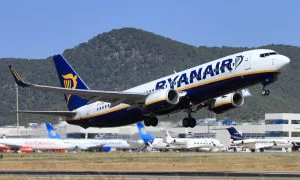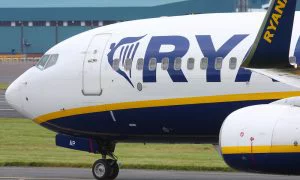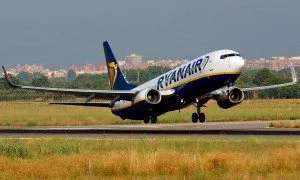Share Tweet Share Share Email Comments
Low-cost airline Ryanair to expand into lucrative transatlantic market.
The board of Ryanair has approved plans to launch transatlantic flights between up to fourteen European cities and the same number of US cities, as part of an ambitious five-year growth strategy outlined by the airline. Destinations will include New York, Boston, Chicago and Miami from London Stansted, Dublin and Berlin in Europe.
Ryanair said it was already in talks with manufacturers about purchasing long-haul aircraft and added that its transatlantic business plan is “dependent on attaining viable long-haul aircraft, and we estimate that’s four to five years away”.
“European consumers want lower-cost travel to the USA and the same for Americans coming to Europe. We see it as a logical development in the European market,” the airline added.
Laker Airways
The early 1970s saw Laker Airways and its owner battle with aviation authorities in the UK and US to gain approval for a low-cost, “no frills” transatlantic service to link London and New York daily during the peak summer period from May to September and four times a week during the remainder of the year. This new service was to be marketed as Skytrain.
Laker’s original Skytrain application assumed a 62.9% break-even load factor. This meant that the airline needed to sell 100 out of 158 seats at a single fare of £37.50 per seat on each flight to start making money with Skytrain.
Skytrain was finally inaugurated between London Gatwick and New York JFK on 26 September in 1977. Unfortunately Laker Airways did not have the financial strength to survive the early 1980s recession and competition by the established scheduled airlines.
The Skytrain concept was targeting people clamouring for discounted air fares across the Atlantic. This was a market the established transatlantic scheduled carriers had ignored, mainly because it was not profitable given their high cost structures and complex organisations.
Although Laker Airways had lower costs and a simpler organisation, it needed high year-round loads to make money at discount prices. Most of the passengers were likely to travel during the summer peak period. This made it challenging to achieve high loads during the winter.
Related Items:Ryanair Share Tweet Share Share Email
Recommended for you
-

 EU Extends In-depth Investigation into Alleged State Aid to Ryanair
EU Extends In-depth Investigation into Alleged State Aid to Ryanair -

 Ryanair Slows 2020 Growth and Closes Two Bases
Ryanair Slows 2020 Growth and Closes Two Bases -

 More Instability Ahead in Ryanair Employment Relations, ECA says
More Instability Ahead in Ryanair Employment Relations, ECA says
Click to comment
Leave a Reply
Your email address will not be published. Required fields are marked *
Comment
Email *
Website
Yes, add me to your mailing list
